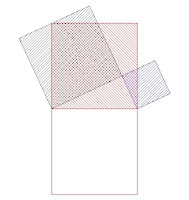 |
| the view from my porch |
Vermont has a new education organization - Vermont Math Leadership Council - thanks to Julie Conrad, Tracy Watterson and others for getting it off the ground. Thanks to me we have a blog with the easy URL vermontmathleadership.org. Thanks to Tim Whiteford, there is a bunch of great posts on the blog! Check it out. We’d like to get more material from more voices on this blog and increase our readership. Anyone can join the organization. Our next meeting is January 29, 2014.
I was about to post something here on my blog about the new Institute of Education Sciences Educator’s Practice Guide called Teaching Math to Young Children. But then I saw that Tim beat me to it by posting about the very same thing on the VMLC blog. So, read his post here.
What I like about this publication is that it helps both rookies and veterans understand how best to work with young children and math. There are clear, specific recommendations that are easy to follow and a selection of easily usable games and ideas that illustrate the concept.
Whereas we often encounter activities or lessons and need to figure out what math we’re really going for, this resource communicates the math goals clearly and first, then hands us the activity to use.










